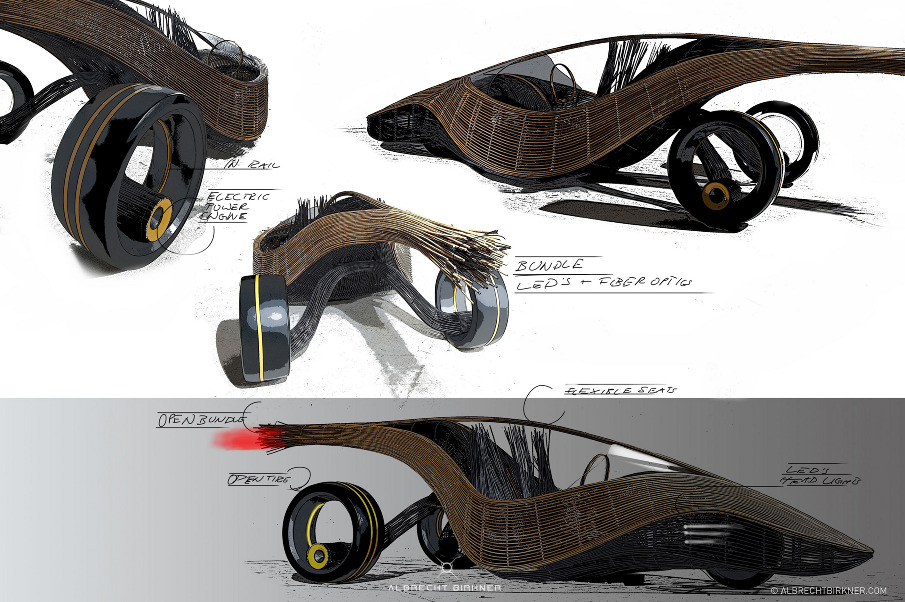In round 2 of sustainable transportation (click here for round 1), I’m shifting gears and focusing on automobile innovation. Back in 2011, designers Kenneth Cobonpue and Albrecht Birkner teamed up to design a concept car: the Phoenix.
https://www.youtube.com/watch?v=P6rsHwr0jK8
I should clarify that this is not a real car. It was built to depict the sustainable future of automobiles that the designers imagined. As a result, I will focus on the issues that sustainable products can face as they try to compete in their fields.
Traditionally made from materials including aluminum, steel, and lead, Phoenix was build using, among other resources, bamboo. The renewable materials had a low environmental impact and a shorter lifetime producing minimal waste. Assuming the car could run on sustainable resources, a problem arrises from integration into modern society. I won’t pretend that I know much about the regulations that cars must pass before becoming road-worthy, but I understand it’s a lengthy process with testing and certificating galore. While bamboo’s strength is remarkable and there are more and more articles citing it as the next carbon fibre, safety issues of bamboo versus steel would be a primary concern of prospective users.
I admit that I am not sure how a marketing team could overcome concerns of safety. Would accumulating certifications be enough? Would a company need to show demo videos about safety as well? I’m not even certain that the product should be introduced to the North American market right away. In Asia and Europe, driving is monitored under different regulations, which could potentially make the entrance of a sustainable bamboo car more realistic. Or, it’s possible that none of this will work. Maybe bamboo is not a future resource in the automobile industry. My guess is that designers will ultimately look to other renewable resources such as hemp or flax that are equally focused on environmental initiatives.

Hi Sam,
Reading your blog post made me think about something that’s always bugged me about automobiles: Why are we moving huge metal machines to and from places when our goal is only to move people? While innovation has definitely grown mankind, our cars have never evolved since Henry Ford’s initial steel designs. Another way to look at the sustainability of cars is through fuel economy. The most fuel efficient car on the market today is the Toyota Prius Hybrid, which can go for 50 miles per gallon. Compare this to the Ford Model T in 1908, which could travel 25 miles per gallon and you can see we really haven’t progressed much.
However, we are capable of so much more! University and High School teams participating in Shell’s Eco-Marathon create vehicles with fuel economies several times greater than the Prius. The winning design in the Urban Concept division boasted an efficiency of 901.5 miles per gallon. In the Prototype division, the efficiency was a whopping 2824 miles per gallon.
So why aren’t we seeing these cars on the road? You touched upon this in your blog regarding government regulations and certifications; and I agree that this is the largest hurdle facing new car designs. It is difficult to allow streamlined fiberglass or bamboo cars on the road when everyone else is driving a steel beast. The only solution, unpractical as it is, would be replacing all cars at once. Bamboo on bamboo crashes may arguably be better than steel on steel!
Thanks for the blog post.
Vincent
http://s06.static-shell.com/content/dam/shell-new/local/corporate/ecomarathon/downloads/pdf/americas/2014-results/sem-americas-2014-results-prototype-gasoline-290414.pdf
http://s02.static-shell.com/content/dam/shell-new/local/corporate/ecomarathon/downloads/pdf/americas/2014-results/sem-americas-2014-results-urbanconcept-gasoline-290414.pdf
http://www.fueleconomy.gov/feg/best-worst.shtml